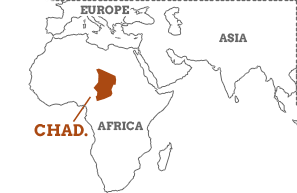Gazelles skip over plateaus, rare crocodiles bask in oases, and the Toubou people lead their camel herds to the shade of the rocks to drink. Landlocked Chad is a massive, sparsely populated Sahelian country. Whilst it is arid, it is not unrelentingly so, and life moves with its seasons. Heavy rain in the months of July to October floods the south and east, semi-nomadic peoples steer their livestock towards grazing ground, and the predators in the amazing Zakouma National Park follow their prey.
![]()
Some 18 hours’ drive from N’Djamena, Zakouma National Park rejoices in its remoteness. Millions of red-billed quelea form mass murmurations above its slow-moving elephant herds.
![]()
Moving northwards through the country, savannah gives way to Sahel, which bleeds into Sahara. Otherworldly limestone pinnacles, sculpted by sand, rise from dunes punctuated by Technicolor lakes and salt pans. There is no traffic, no towns, no electricity and Chad’s populace is dwarfed by the immense landscape. Chad hosts over a million refugees, many from its battle-scarred neighbours. Its border with Libya is land-mined, and the unrest drags on. But what the few, intrepid visitors find here is a rare kind of peace. Discover this country’s hidden soul in our Chad travel guide.


